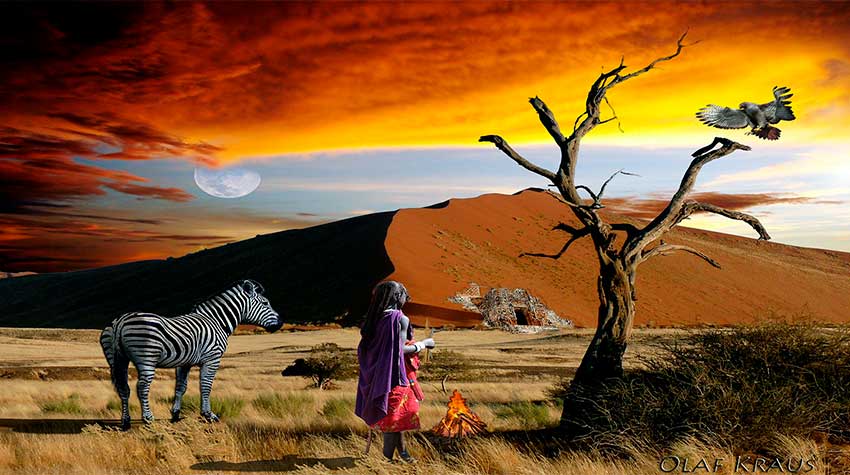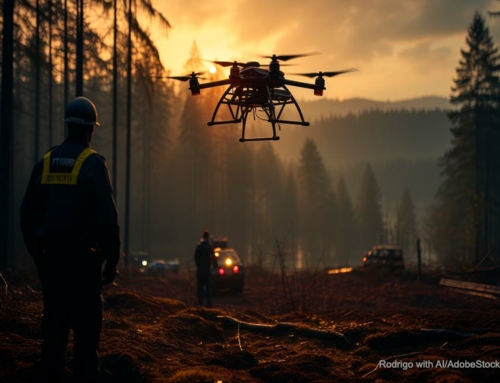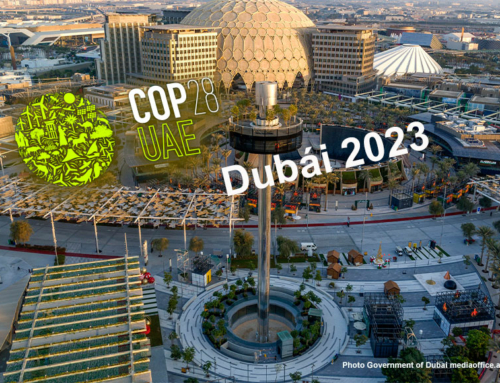We must be clear the difference between these three phenomena on Earth, although they are so closely related to each other that it is almost impossible to talk about one of them without mentioning the other two. These natural conditions of our planet, existing for millions of years, are linked to other characteristics such as distance from the sun, diameter, gravity, speed of rotation and translation, and it is almost three-quarters made up of oceans. This set of conditions came together in a vital explosion that gave rise to an immense and exuberant biodiversity, for now incomparable to any other planet.
Global warming
Natural global warming is due to the natural greenhouse effect in our atmosphere. The solar rays arrive from space, bounce off the surface of the planet and try to escape back to the cosmos, but part of it is trapped by some gases from the atmosphere, carbon dioxide (CO2) being the one that has a greater role among them. If it were not for this phenomenon, the average temperature of the Earth would be about 33 °C lower than today, at an average of 18 °C below zero. It would be an icy planet, probably uninhabited like most of the others in the Solar System or at least unfit for life as we know it.
Today, when we talk about global warming, climate change or the greenhouse effect, we are referring to current phenomena of anthropogenic cause. Most of the increase in global temperature is due to greenhouse gas emissions (GHG), product of human activity, such as burning fossil fuels from automotive traffic, industry and electricity generating plants.
But there are also other factors, such as wildfires and forests deforestation, which eliminate carbon sinks, as a result of the reduction of CO2 extraction from the atmosphere and decrease of the storage of carbon in leaves, trunks and roots of trees and other plants. The livestock industry is responsible for methane emissions. Extensive agriculture, through the intensive use of fertilizers, causes emissions of nitrous oxide, a powerful GHG.
Anthropogenic global warming is the variation in global temperature, linked to the Industrial Revolution, specifically to 1750, the year of comparison of temperature measurements at any time. CO2 in the atmosphere is measured in PPM CO2 (parts per million CO2 equivalent). This designation means that greenhouse gases such as methane, nitrous oxide and others have been reduced to equivalent CO2 units, for practical reasons.
In 1750 CO2 was at 280 PPM, in 1972 it was 330 PPM, in 1992 it was 360 PPM. The 400 PPM psychological mark was broken in 2016 and has since risen to 415 PPM, a figure provided by the Mauna Loa Observatory (Hawaii), (05-19-2019). The 400 PPM level had not been reached for three million years. Therefore, there is no doubt that humans are the cause of the constant increase in the temperature of our planet. There is also no doubt that if action is not taken, CO2 PPMs and temperature will continue to rise, compromising life on Earth.
The greenhouse effects
The natural greenhouse effect is a phenomenon that allows temperatures to be maintained in a fairly uniform range on Earth, thanks to the special characteristics of our atmosphere. The solar rays arrive from space, bounce off the earth’s surface and try to escape back to the cosmos, but part of it is retained in the atmospheric layers. As a consequence, the phenomenon of natural global warming occurs, essential for life.
The composition of the Earth’s atmosphere is 78% nitrogen and 21% oxygen. Only the remaining 1% is made up of other gases, including greenhouse gases (GHG), of which the main ones are water vapor (H2O), carbon dioxide (CO2), nitrous oxide (N2O), methane (CH4) and ozone (O3).
CO2 represents only 0.04% of the total gases in the atmosphere, but with such a meager amount it has been responsible for maintaining life on Earth. Its participation in the atmosphere, although it is extremely low, is very sensitive to modifying the temperature of the planet. A minimal addition of CO2 causes an increase in the greenhouse effect and produces extra warming on the Earth’s surface. Furthermore, CO2 is characterized by its strong fixation in the atmosphere, where it can take more than a thousand years to be eliminated.
Climate change
Climate change is a complex phenomenon, a consequence of global warming, that involves the entire Earth, affecting the life that develops on it. The permanent increase in the average temperature of the planet is producing a series of important alterations in the environment, many of them irreversible in the medium term.
Among these phenomena we can consider the thawing of glaciers and polar ice, increase in the level of seas and oceans, catastrophic floods, large wildfires, unusual hurricanes, more frequent and devastating tornadoes, disappearance of rivers, increase in droughts, desertification of the soils, shortage of drinking water, loss of crops, food shortages, famines, massive migrations, lack of water and food for animals, deterioration of the coral reef, and many other phenomena, some even invisible to the human eye.
Top 10 GHG-emitting countries
The most industrialized countries are the biggest polluters, in this order: China 28.21%, United States 15.99%, India 6.24%, Russia 4.53%, Japan 3.67%, Germany 2.23%, South Korea 1.75%, Iran 1.72%, Canada 1.71 %, Saudi Arabia 1.56%.
The Paris Agreement.
The Paris Agreement is an ambitious global convention to combat climate change, negotiated during COP21, Paris 2015. The central objective of the document is to limit the increase in global temperature to 2 ° C, preferably 1.5 ° C, through the reduction of GHG emissions, caused by fossil fuels such as oil, gas and coal, which when burned release CO2 into the atmosphere. Through the premise “Zero fossil fuels”, it is intended to replace these with renewable, alternative, or clean energy. It also includes recommendations for achieving sustainable development. The Green Climate Fund has been established to help developing countries meet their goals in fighting climate change. The Paris Agreement places special emphasis on increasing the capacity for mitigation, adaptation, and resilience to reduce vulnerability to climate change.
Sandor Alejandro Gerendas-Kiss







Leave A Comment